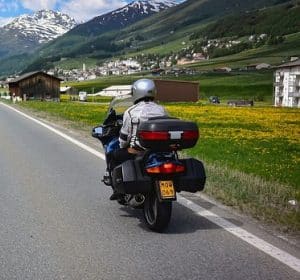I’m frequently asked a variety of questions about my adventures on the open road. One of the most common queries is, “How far can a motorcycle travel on a tank of gas?” This might seem like a straightforward question, but the answer is much more nuanced than you might expect. Several factors come into play when calculating the mileage a motorcycle can get from a full tank. So, let’s dive in and explore them in detail.
How Far Can A Motorcycle Travel On A Tank Of Gas?
Firstly, it’s essential to understand that the fuel efficiency of motorcycles is vastly diverse. Different models, brands, and styles all come with their unique specifications, which greatly affect their fuel consumption. Smaller motorcycles or scooters, typically 250cc and below, often have excellent fuel economy, often exceeding 80 miles per gallon (mpg). Larger touring motorcycles, like my Harley-Davidson Street Glide, can range between 35-50 mpg, while performance-focused superbikes might achieve 30-40 mpg. Dual-sport motorcycles can often fall somewhere in the middle, offering a balance of off-road capability and on-road fuel efficiency.
The size of the motorcycle’s fuel tank is another important factor. Small city commuter bikes might have a fuel tank capacity of 2-3 gallons, whereas larger touring and adventure motorcycles might hold 5-8 gallons, or even more. For example, my trusty touring motorcycle boasts a 6-gallon fuel tank, enabling longer intervals between refills during long road trips.
Given the variability in both fuel economy and tank size, the range a motorcycle can achieve on a single tank of gas can vary greatly. To give you a rough estimate, small motorcycles and scooters might manage 160-240 miles on a tank, while larger touring bikes could potentially cover 200-300 miles, or possibly more. Of course, this assumes ideal conditions and efficient riding habits, but we’ll touch more on that in a moment.
Now, here’s where the nuance truly comes into play. The aforementioned factors are all related to the motorcycle itself, but the way it is ridden can have a substantial impact on fuel efficiency. How fast you’re riding, how hard you accelerate, whether you’re on highways or city streets, the terrain you’re riding on, the weight of the bike including any additional luggage or a passenger – all of these factors can affect your bike’s gas mileage.
Riding aggressively, for instance, by frequently accelerating hard and pushing the bike to high speeds, will consume fuel at a higher rate. Conversely, maintaining a moderate, steady speed can greatly enhance your fuel economy. For long highway journeys, this makes a notable difference in the number of miles you can cover on a tank of gas.
Additionally, the terrain and road conditions also play a significant role. Constant uphill climbs, off-roading, or fighting strong headwinds can lead to increased fuel consumption. On the other hand, smooth, flat highways allow for better gas mileage. The weight you’re carrying will also impact your fuel efficiency – a heavy load, be it luggage or a passenger, will generally result in reduced range.
Last but not least, regular maintenance of your motorcycle can also help maintain its fuel efficiency. A well-tuned engine, clean air filter, optimal tire pressure, and regular oil changes all contribute to better gas mileage.
To answer the original question as accurately as I can, the distance a motorcycle can travel on a single tank of gas can range anywhere from 100 to over 300 miles, depending largely on the type of bike, its fuel efficiency, the size of the fuel tank, the riding conditions, and the rider’s habits. As a rider, knowing and understanding these factors will not only help you plan your trips better, but it will also lead to a more economical and environmentally-friendly ride.
Riding a motorcycle is about embracing the journey, the open road, the freedom – but it’s also about understanding your machine. The more you know about your motorcycle, the more you can enjoy the ride. So, the next time you swing your leg over that seat and hit the road, you’ll have a better understanding of just how far you can go. Safe travels!
P


